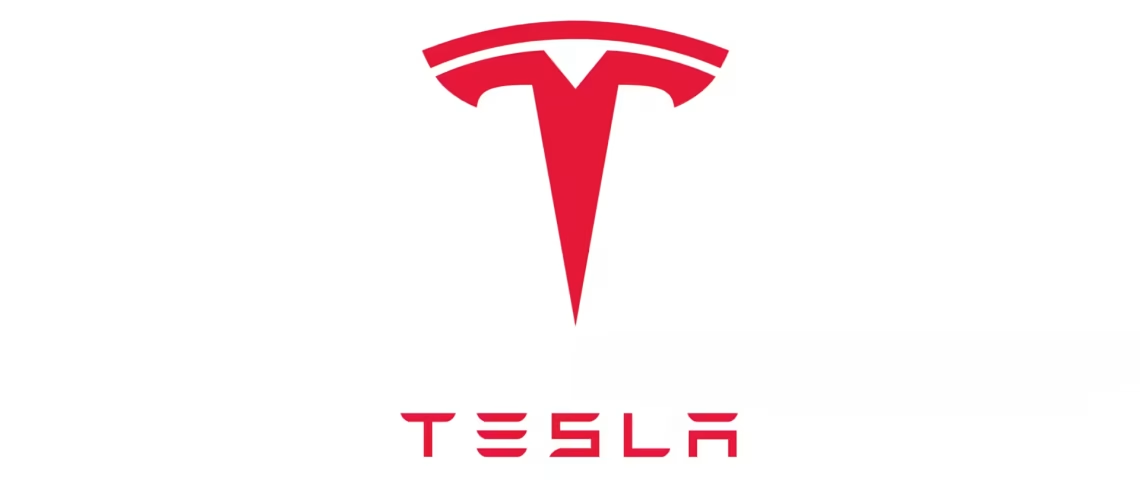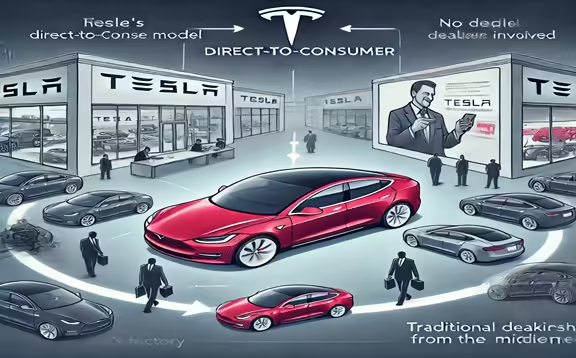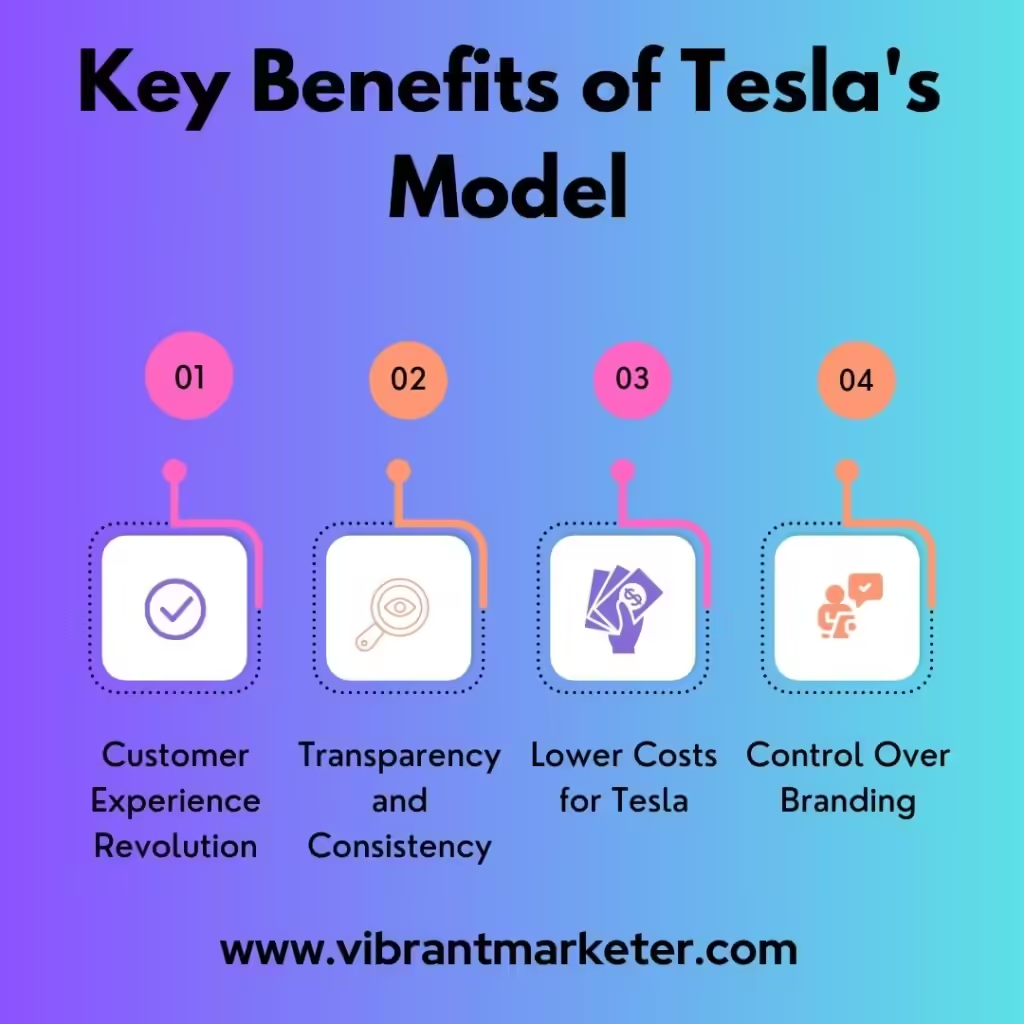
Case Study on Tesla
How did Tesla- Disrupts Automotive Industry with 5-Star Direct-to-Consumer Model

Case study on Tesla, exploring the innovative strategies behind its growth, market dominance, and disruption of the automotive industry. let’s deep dive into How did tesla disrupt automotive industry with 5 star model.
Tesla, founded by Elon Musk in 2003, is not just an electric vehicle (EV) manufacturer; it’s a pioneer in disrupting the traditional automotive industry. One of the major disruptions Tesla brought to the industry is its Direct-to-Consumer (DTC) sales model. Unlike traditional automakers that rely on independent dealerships to sell cars, Tesla bypasses dealerships entirely and sells directly to customers.
This move has revolutionized the car-buying experience and shaken up an industry that has relied on a dealership network for over a century. Here’s how Tesla’s direct-to-consumer model became a game-changer for the automotive world.
The Traditional Dealership Model: Why It's Been the Norm
 Before Tesla, all major car manufacturers followed a franchise dealership model, which involved:
Before Tesla, all major car manufacturers followed a franchise dealership model, which involved:
- Manufacturer-dealer partnerships: Car manufacturers sell their vehicles to independent dealerships, which then sell to customers.
- Dealership profit: Dealerships make money not just from the car sale, but also from services like maintenance, parts, and financing.
- Customer experience: Traditionally, customers visit multiple dealerships, negotiate prices, and rely on the dealership for all car-related services.
The dealership model has been deeply ingrained in the U.S. and global automotive industries due to laws that protect franchise owners. However, this model is known for its high-pressure sales tactics and lack of pricing transparency, which frustrates many customers.
Tesla's Direct-to-Consumer Model: Breaking the Mold
 Tesla eliminated the dealership model entirely by setting up direct-to-consumer sales. This means:
Tesla eliminated the dealership model entirely by setting up direct-to-consumer sales. This means:
Tesla owns all of its sales outlets: Tesla operates its own showrooms and stores, often located in high-traffic areas like shopping malls. These are not traditional car dealerships but more like “experience centers.”
Online-first approach: Tesla primarily sells its cars through its website. Customers can configure their vehicles online, place an order, and have the car delivered directly to their home or a nearby service center.
Fixed pricing: Tesla’s direct sales mean there’s no haggling over price. The price listed on Tesla’s website is the price customers pay, which eliminates the stress and unpredictability often associated with dealership negotiations.
: Tesla ships cars directly from the factory to the buyer, reducing middleman costs and improving profit margins. Customers can either pick up the car or have it delivered.
Key Benefits of Tesla's Model

Customer Experience Revolution: By selling directly to customers, Tesla offers a smooth, no-pressure experience. Customers can explore Tesla vehicles online, customize their purchase, and even arrange financing, all without setting foot in a dealership.
Transparency and Consistency: Since there are no independent dealerships involved, Tesla controls the pricing and customer experience from end to end. This ensures a uniform experience across all Tesla stores and online platforms.
Lower Costs for Tesla: Without dealerships, Tesla avoids paying dealer commissions or splitting profits. Instead, it retains full control of revenue, which allows the company to invest more into research, development, and expanding its charging network.
Control Over Branding: Tesla’s direct-to-consumer model allows the company to maintain strict control over its brand image, ensuring that customers only get the message and experience Tesla wants to deliver, without interference from third parties (dealers).
Challenges Faced by Tesla in Disrupting the Market
While Tesla’s model has been largely successful, it has not been without its challenges:
Legal Battles: Many U.S. states have laws that protect franchise dealerships, making it illegal for manufacturers to sell directly to consumers. Tesla has had to fight these laws in various states. For instance, Texas and Michigan initially banned Tesla’s direct sales, forcing Tesla to deliver cars out of state or rely on creative loopholes.
Service Network Limitations: Dealerships provide a network for after-sales service, such as repairs and maintenance. By skipping dealerships, Tesla had to create its own service centers and mobile repair units. This has led to service delays in some regions due to the limited number of service centers compared to the extensive network of traditional dealerships.
Scaling Production: Tesla’s direct-to-consumer model works well when production matches demand, but there have been times when demand has outstripped supply. Tesla has had to deal with production bottlenecks, which have led to delivery delays and customer dissatisfaction in some cases.
Data Points and Facts
Cost Efficiency: By avoiding dealerships, Tesla saves 10-15% of the cost that typically goes to dealership commissions, according to industry analysts. This has allowed Tesla to reinvest in technology and maintain a competitive edge despite the high initial costs of EV production.
Sales Growth: Tesla sold approximately 1.31 million vehicles in 2022, a significant jump from 936,000 in 2021. This massive sales growth is attributed to the ease of purchasing directly from the brand.
Market Disruption: Tesla now holds a 65% market share in the U.S. electric vehicle market as of 2023. This dominance is largely due to its innovative sales model combined with its leading-edge technology.
Direct Interaction: According to a report from McKinsey, direct-to-consumer sales allow Tesla to gather valuable data on customer preferences, driving patterns, and product feedback, which they use to improve their offerings and customer satisfaction.
Customer Satisfaction: Tesla has ranked high on customer satisfaction surveys, often topping J.D. Power’s consumer studies, thanks to its transparent and streamlined buying process.
Impact on the Automotive Industry
In response to Tesla, companies like Ford and Volvo have begun experimenting with direct online sales for their electric vehicles, aiming to simplify the buying process and attract younger, tech-savvy customers who expect a seamless, digital-first experience.
Conclusion: The impact of Tesla on the future of the automotive industry
The DTC model is one of the many reasons why Tesla continues to stand out as a leader in both the electric vehicle space and the broader automotive industry
Key Takeaways
- Tesla eliminated dealerships, creating a direct link between itself and customers.
- This model offers lower costs, a better customer experience, and more control over branding.
- Tesla faced legal and logistical challenges but has still grown rapidly.
- The automotive industry is slowly adapting to Tesla’s innovative sales approach.
By reinventing how cars are sold, Tesla didn’t just disrupt the market—it created a new blueprint for the future of automotive retail.







